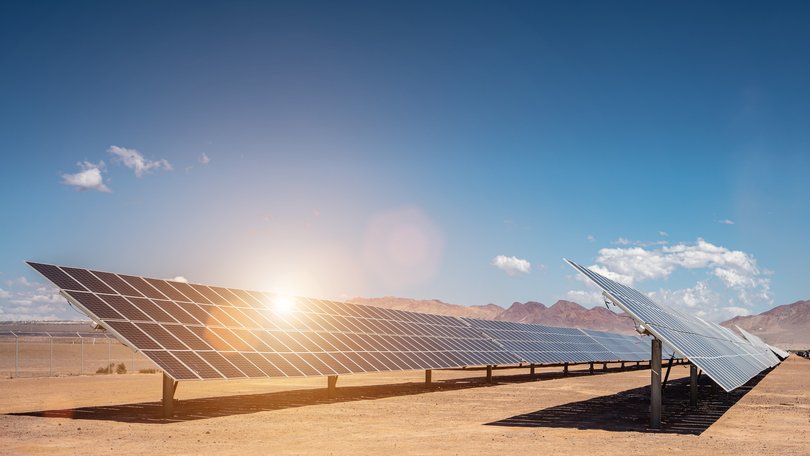THE ECONOMIST: Solar industry is buzzing as US renewable energy demand rises despite Trump hostility

The Sphere is a glittering example of American innovation and excess. It also uses, at peak times, as much electricity as 21,000 homes. The frontman for the Eagles, a veteran rock band who recently performed in the enormous Las Vegas amphitheatre, praised its 1,600 speakers as “better than any stadium”.
Inside, the light display is mind-bending. Outside, the Strip is treated to huge images lit by 50m LEDs. An energy executive staying at the neighbouring Venetian hotel complained: “I had my blackout curtain shut but that damn glowing eyeball still kept me up all night.”
The sleep-deprived boss was attending RE+, America’s largest annual clean-energy conference. His sour mood might be forgiven, as his industry seems at first glance to be in deep trouble. Donald Trump’s administration has unleashed a wave of measures, from the One Big Beautiful Bill Act (BBB) to regulatory harassment, designed to undermine tax and policy support for wind and solar power. Trump’s caprice has already halted big offshore wind projects. Many have worried solar could be next.
Sign up to The Nightly's newsletters.
Get the first look at the digital newspaper, curated daily stories and breaking headlines delivered to your inbox.
By continuing you agree to our Terms and Privacy Policy.Yet the 37,000 people at RE+ were buzzing. In a fiery opening speech Abigail Hopper of the Solar Energy Industries Association, the trade group that organised the conference, acknowledged that “the people in power right now are openly hostile to our industry.” She argued that the forces of the market and policymaking “are at odds”, but vowed: “Our industry will not retreat.”
Which will win, policy or market? In the long term, solar energy’s remarkable gains in efficiency and fast-tumbling prices make its future bright. But the short-term picture is also sunnier than you may suppose. Analysts now think solar investment will rebound in America. Wood Mackenzie, a consultancy, spots signs of a coming Trump bump. Brian Nelson of ABB, a European energy-equipment supplier investing $US120 million ($179m) in expanding two American factories, declares that “we anticipate continued growth in solar.”
The Energy Information Administration (EIA), an official body, calculated in August that developers added 12 gigawatts (GW) of utility-scale solar generating capacity in the first half of 2025. From its surveys of developers, it expects a further 21GW in the second half. The latest EIA outlook, published on September 9, predicted that the American power sector will grow by 2.3 per cent this year and 3 per cent next, and says that “solar power will supply the largest share of the increase in both years.”
There are two explanations for this investment boomlet. The first is a race to put steel in the ground to qualify for tax credits before deadlines imposed by the BBB. Stronger solar operators able to secure necessary components from stretched supply chains are forging ahead. A shakeout of weaker players is widely expected, as is a drive to cut costs and improve efficiency to make up for lost subsidies and tax breaks.
The second is that demand for solar energy remains strong. Chris Seiple of Wood Mackenzie calculates that American utilities have 17GW of large loads under construction connecting to their systems and are committed to adding another 99GW, roughly equal to 16 per cent of today’s peak demand, as a result of the rise of AI and data centres.

He reckons that despite the current headwinds, much of this will come from solar power, accompanied by big batteries for storage. Nuclear power is a distant dream, coal is costly and a combined-cycle gas turbine takes years to acquire. In contrast, points out Hopper, “we deliver power faster and cheaper.” In sun-soaked Nevada, the Sphere’s operators expect to get around 70 per cent of its power from solar energy by 2027.
The industry is innovating as eagerly as it is investing. At RE+, AES, a big American power company, showed off Maximo, a super-strong AI-enabled robot that works alongside crews, helping them to install utility-scale solar panels at lightning speed. On September 3 the firm sent a fleet of Maximos to expand a massive solar project in California expected to supply more than 1GW of clean energy to Amazon. It now plans to make Maximo available to other solar installers.
Given the solar industry’s resilient mood and fair prospects Trump’s anti-solar crusade may end up calling to mind the Eagles’ best-known hit, Hotel California. He can check out any time he likes, but he can never leave.
Originally published as America’s solar industry is buzzing
